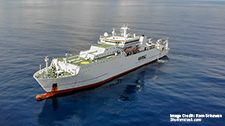Nuclear Safety Cooperation in Northeast Asia
Sangsoo Lee
Northeast Asia—dominated by China, Japan, and South Korea—is currently the world’s third largest energy-consuming region. Comparatively rapid economic growth in Northeast Asia than other regions, driven largely by energy-intensive sectors such as steel and petrochemicals, will continue to lead significant increases in energy demand. By 2030, its primary energy consumption is projected to exceed that of both North America and Europe. This growing demand, however, coupled with a lack of fossil fuel resources in Northeast Asia, has resulted in energy insecurity. – See more at: http://www.eppen.org/en/index.php?sayfa=Yorumlar&link=&makale=193#sthash.1lAWpwJd.dpuf
Related Publications
-
EU-Thailand FTA Negotiations: IUU Fishing and Human Rights Remain Obstacles
Thailand’s fishing industry, which at its height saw as many as 200,000 migrant workers from neighboring Laos, Myanmar, and Cambodia caught in a brutal system of abuse, withered global criticism […]
-
Needed, a Framework to Protect Undersea Cables
In the data-driven world we live in, submarine cables are the arteries that connect nation-states and their people in literally every human activity, including trade, commerce, entertainment, and social interactions. […]
-
The Quad and Submarine Cable Protection in the Indo-Pacific: Policy Recommendations
This policy brief analyzes the Quadrilateral Security Dialogue (Quad) initiative on submarine cables in the Indo-Pacific and offers a timely roadmap as to how best to protect them. It first […]
-
Amid Reports on Chinese Expansion of Bases, Sri Lanka Unveils SOP: Need for a Reality Check?
India has realized it cannot possibly balance China’s growing influence on its own, nor can it afford to have the U.S. leave the Indian Ocean Region (IOR) given China’s significant […]
-
Can India Rupture the Semiconductor Market?
In June 2023, India announced its decision to reopen the application process for existing and new applicants interested in setting up semiconductor fabrication plants (commonly called fabs). The process will […]



